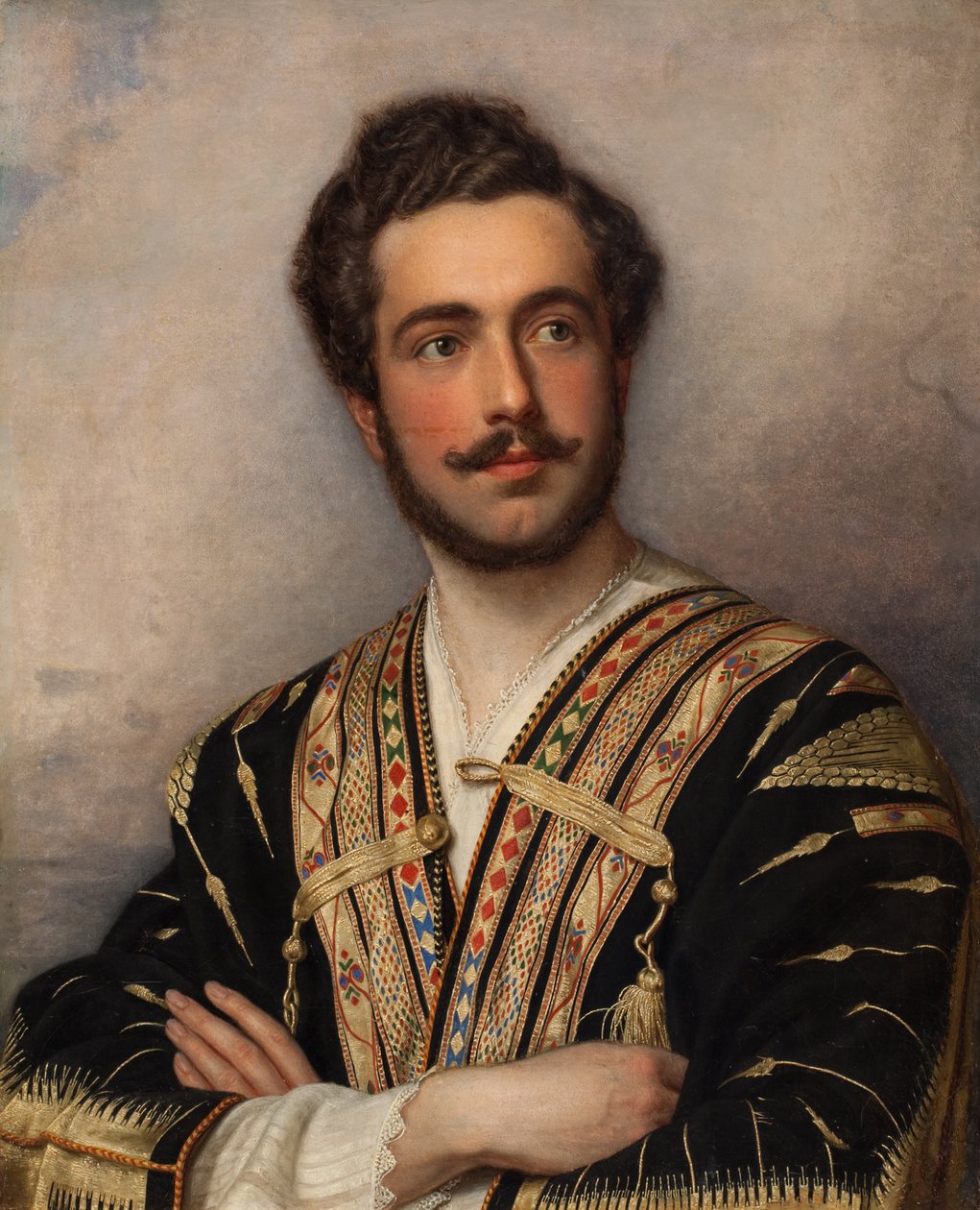Gagarin Grigory

Grigory Gagarin (b. May 11, 1810, St. Petersburg – d. January 30, 1893, Châtellerault, France) was a Russian painter, architect, art researcher, vice-president of the St. Petersburg Academy of Arts (1859–1872). He did not receive a systematic education, though for a while he studied with K. Bryullov in Rome. In 1841–1864, he was in military service. He participated in the Caucasian Wars. In 1848–1854, he lived in Tbilisi and took an active part in the cultural life of Tbilisi: in the early 1850s, his sketches were used to paint the Sioni Church in Tbilisi, the hall and foyers of the former Tbilisi Opera Theater (destroyed by fire). At the Georgian Theater, he artistically designed G. Eristavi's plays: Divorce and Dispute. He painted portraits of Georgian aristocrats David Chavchavadze (1840s, Russian Museum, St. Petersburg), Marta Sologhashvili (1842, Georgian Museum of Art, Tbilisi), landscapes, and drew views of Tbilisi in the mid-19th century, various household scenes, monuments of Georgian architecture, carvings, etc. In this regard, the albums The Captivating Caucasus and Caucasian Costumes published by him are especially important for their artistic and documentary value. Gagarin’s work is influenced by romanticism. Gagarin illustrated V. Sollogub’s book The Tarantas (1845). Under Gagarin’s leadership, the “Museum of Christian Antiquities” was founded at the St. Petersburg Academy of Arts.
Literary works: Собрание византийских, грузинских и древне-русских орнаментов и памятников архитектуры. Серии 1–3, СПб., 1897–1903; Рисунки и наброски с натуры, СПб., 1902; Le Caucase pittoresque, P., 1845–57.
Literature: Савинов А. Н., Г. Гагарин [1810–1893], М., 1950; მისივე, Г. Г. Гагарин, წგ.: Русское искусство... Первая половина XIX века, М., 1954.
V. Beridze


